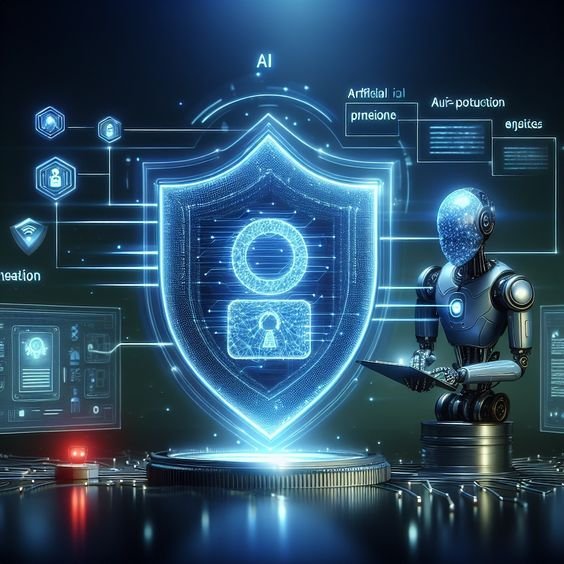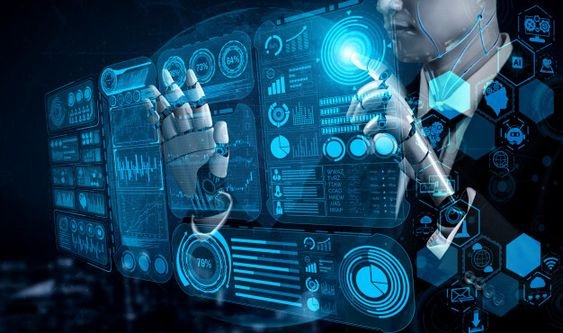
Introduction
Biometrics, the science of recognizing individuals based on their unique physical or behavioral characteristics, has emerged as a powerful tool in enhancing personal security. Unlike traditional security methods such as passwords and PINs, biometric systems rely on unique human traits such as fingerprints, facial features, voice patterns, and even iris scans. These characteristics are inherently difficult to replicate or steal, making biometrics a more secure and reliable option for protecting sensitive information and ensuring personal safety.
In this article, we will explore how biometrics is revolutionizing personal security, the various biometric technologies in use today, their applications across different sectors, the advantages and challenges of biometric security, and the future outlook of this rapidly evolving field.
Understanding Biometrics
Biometrics refers to the measurement and statistical analysis of people’s unique physical and behavioral characteristics. The technology is primarily used for identification and access control or for identifying individuals who are under surveillance. Biometric identifiers are unique to individuals and include fingerprints, facial recognition, iris patterns, voice recognition, and even DNA.
- Physical Biometrics: These include fingerprints, facial recognition, iris and retina scanning, and hand geometry. Physical biometrics are based on the distinctiveness of an individual’s physical traits, which remain relatively stable over time.
- Behavioral Biometrics: These include voice recognition, keystroke dynamics, gait analysis, and signature verification. Behavioral biometrics are based on patterns of behavior that can be measured and analyzed.
The Rise of Biometrics in Personal Security
The increasing reliance on digital platforms for various services, from banking to healthcare, has heightened the need for robust security measures. Traditional security methods, such as passwords and security questions, have become increasingly vulnerable to cyber-attacks. Biometrics offers a solution by providing a higher level of security that is based on something that an individual is, rather than something they know or have.
- Eliminating Passwords: Passwords have long been a weak point in security systems. They can be forgotten, stolen, or guessed. Biometric authentication eliminates the need for passwords by using a person’s unique characteristics to verify their identity.
- Enhanced Security in Mobile Devices: Mobile devices are now equipped with fingerprint scanners, facial recognition technology, and voice recognition software. These features allow users to unlock their phones, access apps, and make payments securely.
- Banking and Financial Services: The financial sector has embraced biometrics to enhance security. Fingerprint authentication is now common in banking apps, and some banks use facial recognition or voice recognition for customer verification.
- Healthcare Security: In healthcare, biometrics helps protect patient data, ensuring that only authorized personnel have access to sensitive information. It also aids in the accurate identification of patients, reducing the risk of medical errors.
- Access Control and Surveillance: Biometrics is widely used in physical security systems for access control. Fingerprint scanners, facial recognition cameras, and iris scanners are used in high-security areas to ensure that only authorized individuals can enter.
Types of Biometric Technologies and Their Applications
- Fingerprint Recognition
- Overview: One of the oldest and most widely used biometric technologies, fingerprint recognition involves capturing and analyzing the unique patterns of ridges and valleys on a person’s fingertips.
- Applications: Used in smartphones, laptops, time and attendance systems, and access control systems.
- Facial Recognition
- Overview: Facial recognition technology identifies or verifies a person by analyzing their facial features. This technology has gained popularity due to its non-intrusive nature and ease of use.
- Applications: Used in smartphones, airports, law enforcement, and social media platforms.
- Iris Recognition
- Overview: Iris recognition involves scanning the unique patterns in the colored ring of the eye. It is known for its high accuracy and is used in high-security environments.
- Applications: Used in border control, airport security, and access control in sensitive areas.
- Voice Recognition
- Overview: Voice recognition technology analyzes the unique characteristics of a person’s voice, including tone, pitch, and rhythm.
- Applications: Used in call centers, banking, and smart home devices for voice-activated commands.
- DNA Biometrics
- Overview: DNA biometrics involves analyzing an individual’s genetic code to verify identity. While not yet widely used due to the complexity and cost, it holds potential for the future.
- Applications: Used in forensic science and criminal investigations.
- Behavioral Biometrics
- Overview: Behavioral biometrics analyzes patterns in an individual’s behavior, such as typing rhythm, gait, or interaction with devices.
- Applications: Used in fraud detection, continuous authentication in online services, and enhanced security for mobile applications.
Advantages of Biometric Security
- Increased Security
- Biometrics offers a higher level of security compared to traditional methods. Biometric traits are unique to each individual and difficult to replicate, making it challenging for unauthorized users to gain access.
- Convenience
- Biometrics eliminates the need for remembering passwords or carrying identification cards. Users can simply use their fingerprint or face to gain access to devices, accounts, and secure locations.
- Accuracy and Speed
- Biometric systems provide quick and accurate identification, making them ideal for high-traffic areas such as airports or large corporate offices.
- Fraud Prevention
- In banking and financial services, biometrics significantly reduce the risk of identity theft and fraud by ensuring that only the account holder can access their account.
- Non-transferable
- Biometric information cannot be easily transferred or shared, unlike passwords or tokens. This makes it more secure for personal identification.
Challenges and Concerns with Biometric Security
- Privacy Concerns
- The collection and storage of biometric data raise significant privacy concerns. If biometric data is compromised, it cannot be changed like a password, leading to potential lifelong security risks.
- Data Security
- Biometric data needs to be securely stored and encrypted to prevent unauthorized access. A breach of biometric databases could have severe consequences.
- False Positives and False Negatives
- No biometric system is infallible. There is always a risk of false positives (granting access to an unauthorized person) or false negatives (denying access to an authorized person).
- High Costs
- Implementing biometric systems can be expensive, particularly for small businesses or individuals. The technology requires specialized hardware and software, which can be costly to deploy and maintain.
- Ethical and Legal Issues
- The use of biometrics, especially in surveillance, raises ethical and legal concerns. There is a fine line between using biometrics for security and infringing on individual privacy rights.
Future of Biometrics in Personal Security
- Advancements in Technology
- Continuous advancements in biometric technology, such as the integration of artificial intelligence and machine learning, are making biometric systems more accurate, faster, and secure. AI can enhance the capability of biometric systems to learn and adapt to changes in a person’s physical appearance or behavior over time.
- Multimodal Biometrics
- The future may see more widespread use of multimodal biometric systems, which combine two or more biometric modalities (e.g., fingerprint and facial recognition) to improve accuracy and security.
- Integration with IoT Devices
- As the Internet of Things (IoT) continues to grow, biometrics will play a crucial role in securing connected devices. From smart homes to connected cars, biometric authentication will ensure that only authorized users can access and control these devices.
- Biometrics in E-commerce
- Biometrics is expected to become more prevalent in e-commerce, providing secure and seamless authentication for online transactions. This could include using facial recognition or fingerprints to approve purchases, reducing the reliance on passwords or credit card information.
- Decentralized Storage
- To address privacy concerns, future biometric systems may adopt decentralized storage solutions, where biometric data is stored on the individual’s device rather than a central server. This approach could reduce the risk of large-scale data breaches.
- Regulatory Frameworks
- Governments and regulatory bodies are likely to introduce more stringent regulations around the use of biometric data to protect individual privacy and ensure that biometric systems are used responsibly.
- Biometrics in Wearable Technology
- Wearable technology, such as smartwatches and fitness trackers, will likely incorporate biometric sensors to provide continuous authentication and security. These devices could monitor vital signs, movements, and even brain activity to verify identity.
- Biometrics in Autonomous Vehicles
- In the future, autonomous vehicles could use biometrics to authenticate drivers and passengers, ensuring that only authorized individuals can operate or access the vehicle.
Conclusion
Biometrics is set to revolutionize personal security by providing a more secure, convenient, and accurate way to verify identity. While the technology offers numerous advantages, including increased security and fraud prevention, it also presents challenges related to privacy, data security, and ethical concerns. As biometric technology continues to evolve, it will play an increasingly critical role in securing our digital and physical worlds. The future of personal security is undoubtedly biometrics, and as this technology becomes more widespread, it will fundamentally change how we protect ourselves and our information in the digital age.
ALSO READ: Samsung Galaxy S24 FE: Anticipated Launch and Key Features









